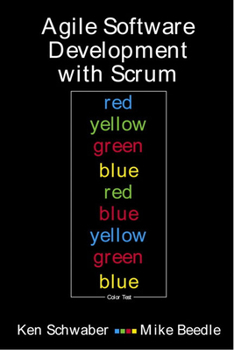Agile Software Development with Scrum
Select Format
Select Condition 
Book Overview
eXtreme Programming is an ideal many software shops would love to reach, but with the constant pressures to produce software quickly, they cannot actually implement it. The Agile software process allows a company to implement eXtreme Programming quickly and immediately-and to begin producing software incrementally in as little as 30 days ! Implementing eXtreme Programming is easier said than done. The process can be time consuming and actually slow down current software projects that are in process. This book shows readers how to use SCRUM, an Agile software development process, to quickly and seamlessly implement XP in their shop-while still producing actual software. Using SCRUM and the Agile process can virtually eliminate all downtime during an XP implementation.
Format:Paperback
Language:English
ISBN:0130676349
ISBN13:9780130676344
Release Date:October 2001
Publisher:Pearson
Length:176 Pages
Weight:0.65 lbs.
Dimensions:0.5" x 6.0" x 9.0"












